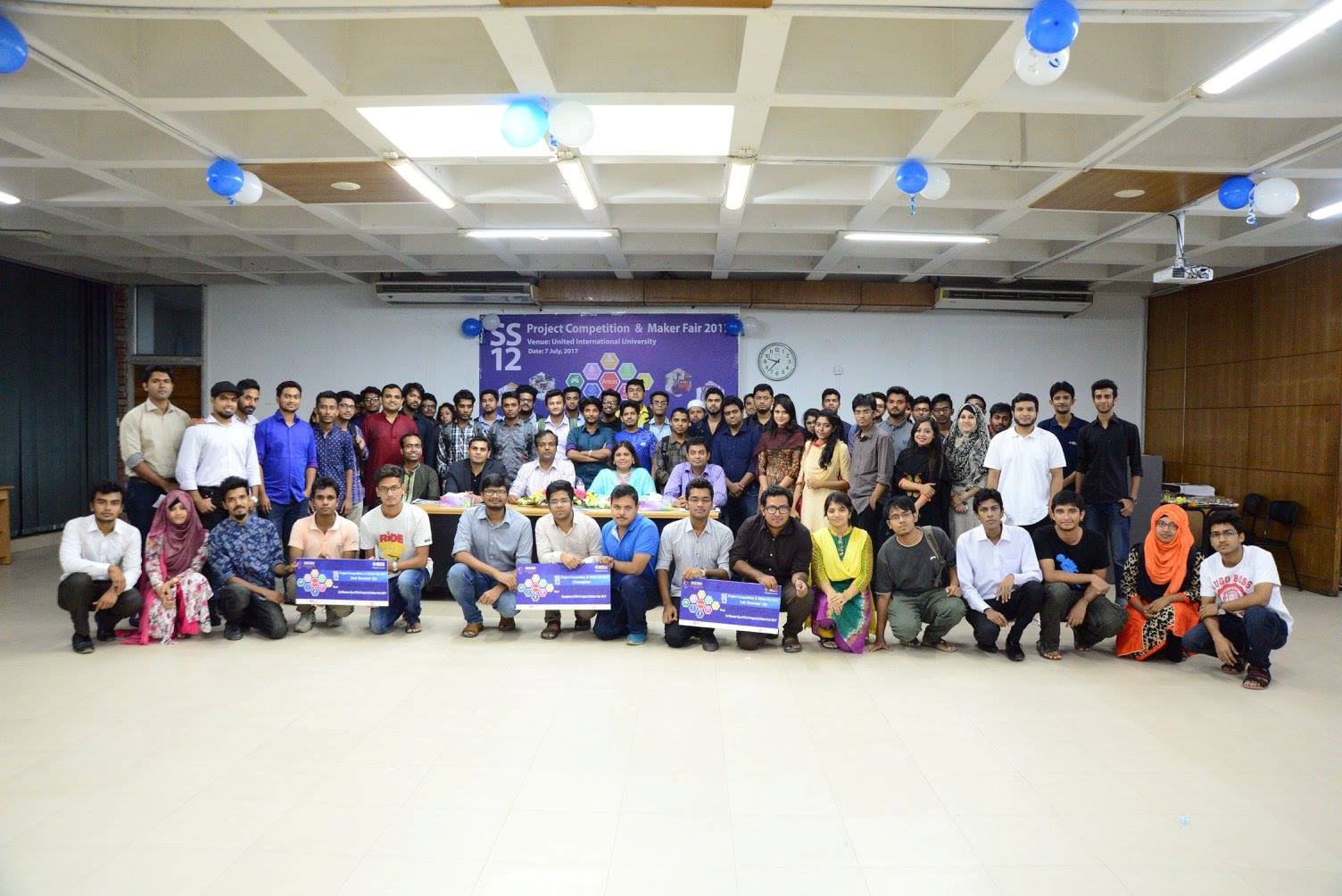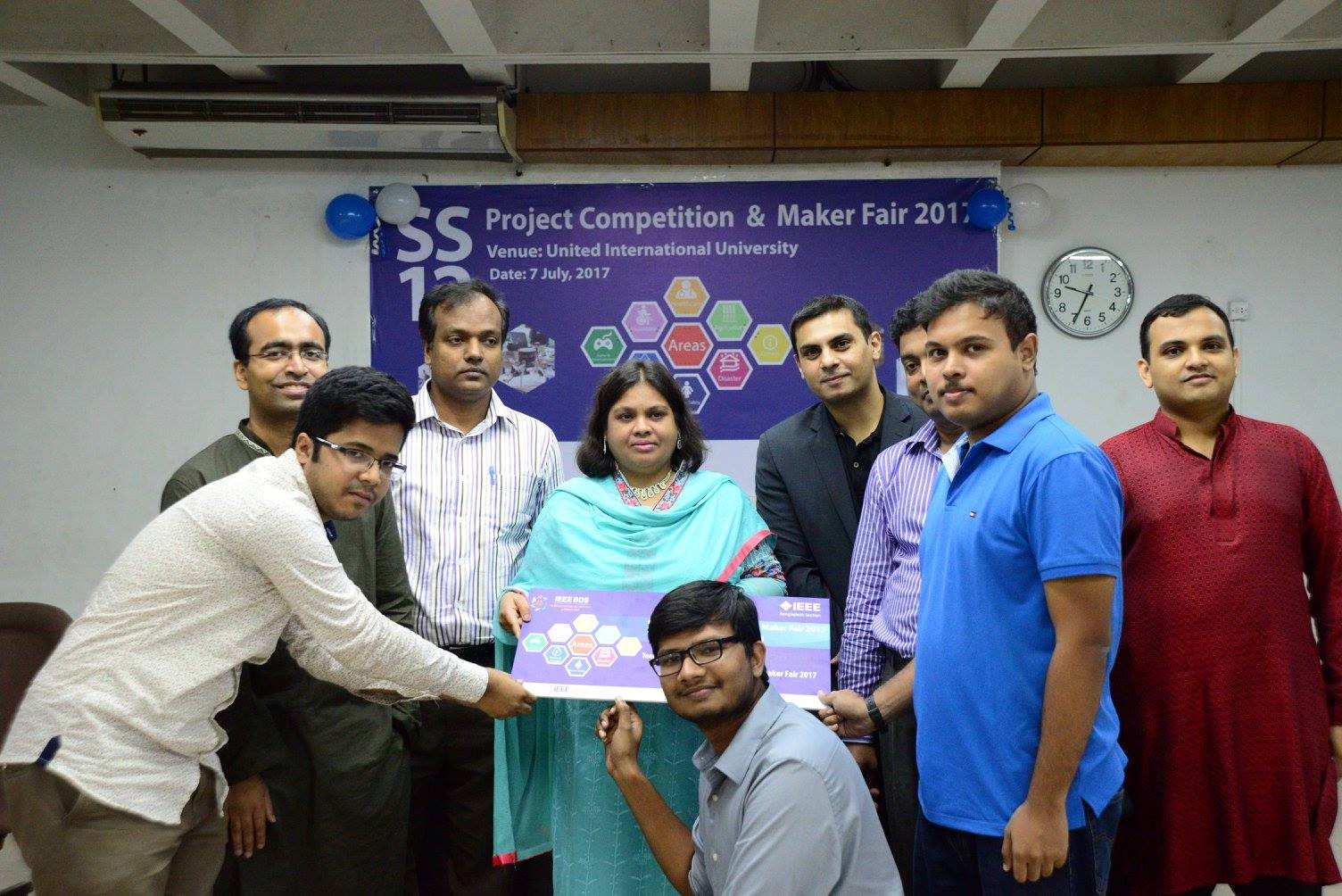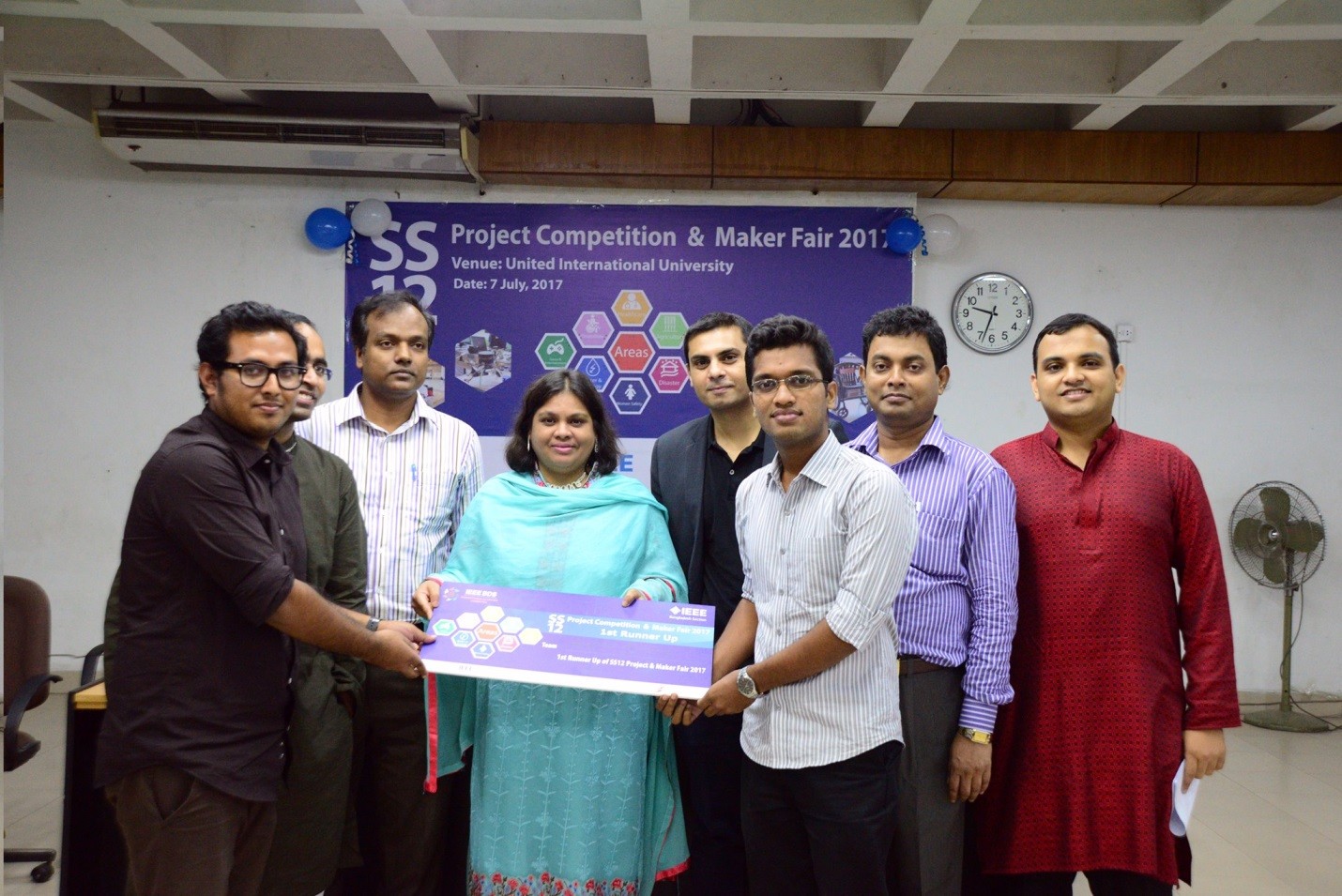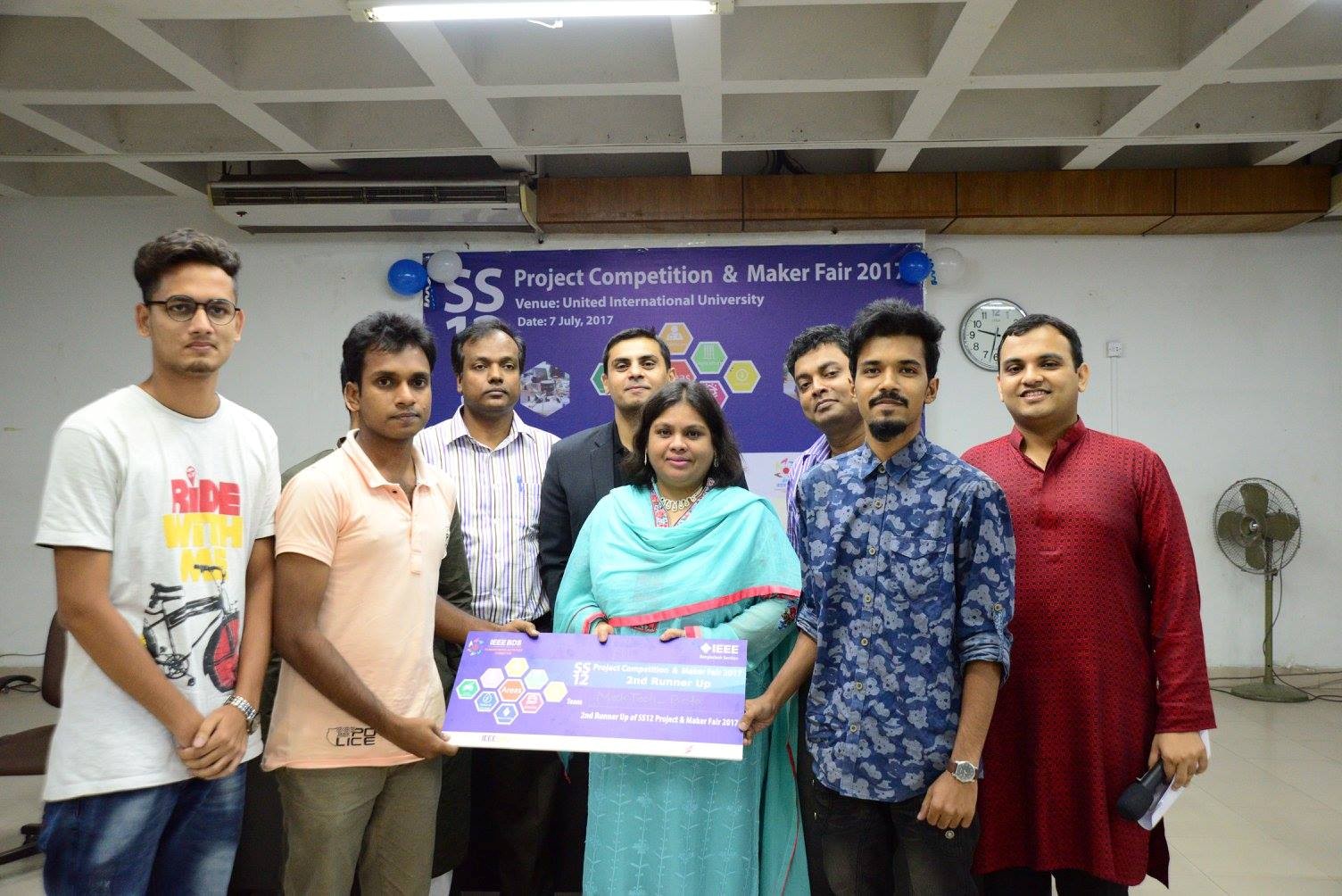
The SS12 Coding and Making Challenge brought students in India and Bangladesh together to develop technological solutions to problems afflicting people in their communities. The event was organized by Madras IEEE Education Society, Project Possibility and REAL Breakthrough, and hosted in partnership with different IEEE sections, Universities and leading technology industry companies. The challenge is conducted to recognize the best social innovation application on the theme given: EDUCATION THROUGH INNOVATION: INNOVATE, DEMONSTRATE AND EDUCATE.
This international student project competition encourages innovative students to take up the initiative of making their application as a prototype model, demonstrate it and educate themselves through this innovation. The students are advised to interact with a community for which the innovation is intended and understand the issues clearly and work out the model. The final product developed should have an added help and support module for the users.
Under this, the projects can be Mobile Apps or Computer Based or IoT based pertaining to the following:
- Agriculture and environment
- Healthcare
- Assistive systems for people with disabilities
- Games and entertainment
- Clean water and energy
- Disaster management
- Women safety
- Others
One of the local rounds of SS12 Project Competition 2017 was organized jointly by IEEE Bangladesh Section, Humanitarian Activities Committee of IEEE BDS and SIGHT-FLASH Bangladesh Section and hosted by IEEE UIU Student Branch. Local final was held on 7 July , 2017 at United International University.
In the competition 23 teams from different public and private universities participated and showcased their projects which were related to humanitarian technology. Prof. Dr. Shaikh Anowarul Fattah, (Designation), Prof. Dr. Celia Shahnaz, Vice-Chair (Activity) of IEEE Bangladesh Section, Dr. Engr. MuhibulHaqueBhuyan, Associate Professor and Chairman, Dept. of EEE , South East University, Dr. Reduan Hasan Khan, Head of Internet of Things (IoT) , Grameenphone Ltd., AzfarAdib , Lead Engineer Grameenphone Ltd., Dr. Md. ZuniadBaten, Assistant Professor, BUET were present as the honorable judges in the event.

Champion team: Odommo Bangla
University :Bangladesh University of Engineering & Technology
Project Title: Writing Assistance for Physically Disabled People
Idea: People with disabilities such as autism, cerebral palsy, Lou Gehrig’s disease (ALS), muscular dystrophy and spinal cord injury have very little scopes to express themselves. Specially the paralyzed people who can hardly move any of their limbs. A developed a writing assistant device through which a paralyzed person or any kind of handicap person can easily express themselves. They have used that technique to build a device which uses Gaze Interaction method. As a start, they have made the device and developed the software to an extent that a person can draw things and play a game (ping pong!) using eye movements and type with a default keyboard. But the team expects to extend it to a much fuller extent as they made a mouse pointer which can be moved using the eyes.

1st Runner Up team: HyperDrive:
University : Khulna University of Engineering and Technology
Project Title: An Improved Low-Cost Nose-Tracking Cursor Control With Some New Features
Idea:Persons with tetraplegia, suffering from traumatic brain injury, cerebral palsy, neurological injury or stroke, are very difficult to use personal computers’ standard input interface, such as the keyboard and the mouse, during their rehabilitation and everyday life activities. Therefore, it is highly desired to develop Assistive Technologies (ATs) for persons with tetraplegia. In our work, Human Computer Interface(HCI) is implemented with digital image processing and new approach to control personal computers with high efficiency. The main three features of this interface are nose tracking cursor control, auto brightness control and face controlled display off. In nose tracking system, anyone can control cursor by moving nose and changing mouth status. Its performance is better than camera mouse and any other comparative systems. Auto brightness control system change the display brightness automatically to make the display more comfortable for eyes. And face controlled display off, turn off the display when no one is using it which saves around 20W of power. All these features make the computer friendlier for disable person and improve its efficiency.

2nd Runner Up Team: MekTek Beta
University : University : Rajshahi University of Engineering and Technology
Project Title: Color for Blind People
Idea: Project color for blinds is for the development of education of the blind people. The developed eBraille system includes a braille reader and a braille typewriter which are connected online. So, if a child can learn braille system at home from his mother and he can get online schooling as well. The reader and the typewriter are very easy to use. Smart and simple web interface makes it easier for a mother or an online teacher to interact with a blind child and teach him properly.
Honorable mentions:
Team: Hephaestus
University: Army Institute of Business Administration (AIBA), Savar
Project: Bonita – Voice of Woman
Idea: Building a mobile app-Bonita, through which women of our country can fight against violence.The app will provide ONE CLICK services to the users. The features include one click Text with location, One Click Voice Recording call, Tracking Service, Finding Nearest Hospital, Police station, vehicle and Bus Stands. Users will also get all information and hotline services of NGOs and Law Enforcement Agencies of Bangladesh.
Team: BuetOctatron
University: Bangladesh University of Engineering & Technology
Project: Fire and Flood Fighter Octocopter
Idea: The idea is to use recent ongoing technology to improve our lifestyle. The technology here is an octocopter(drone with 8 arms) which can work like a fire service people as well as can help people in flood affected areas.
Team: Polaris
University: Bangladesh University of Engineering & Technology
Project: Re-designing Drainage System by Solving Water Logging Using Algorithmic Approach
Water logging has been disrupting livelihoods of about one million people in Bangladesh during past two decades.We propose a solution to redesign a city’s drainage system using algorithmic approach.Location based water-logging measurement data are collected from users via a mobile-application.These data are processed into a graph and the total volume of water is calculated by convex-hull algorithm.Then,the area-to-area rate of flow is optimized by Ford-Fulkerson’s algorithm to draw out maximum amount of water compared to the pipeline’s’ capacity.There is also a re-designed and optimized pipeline-placement map for the city .

